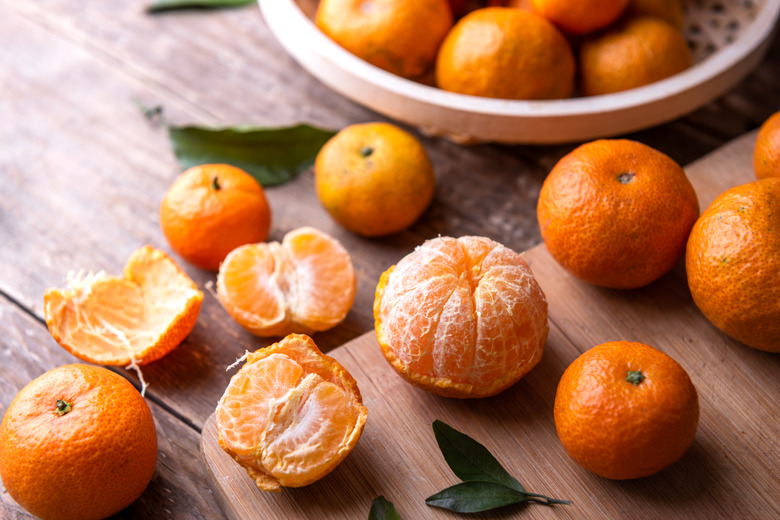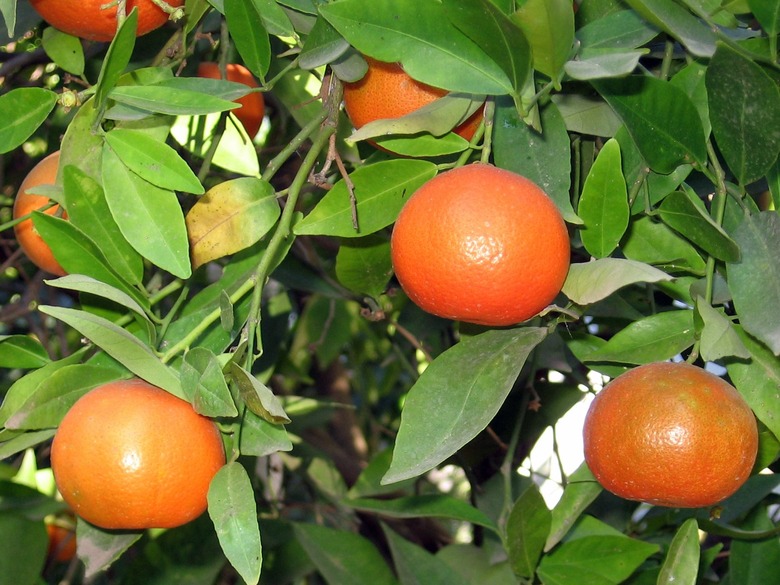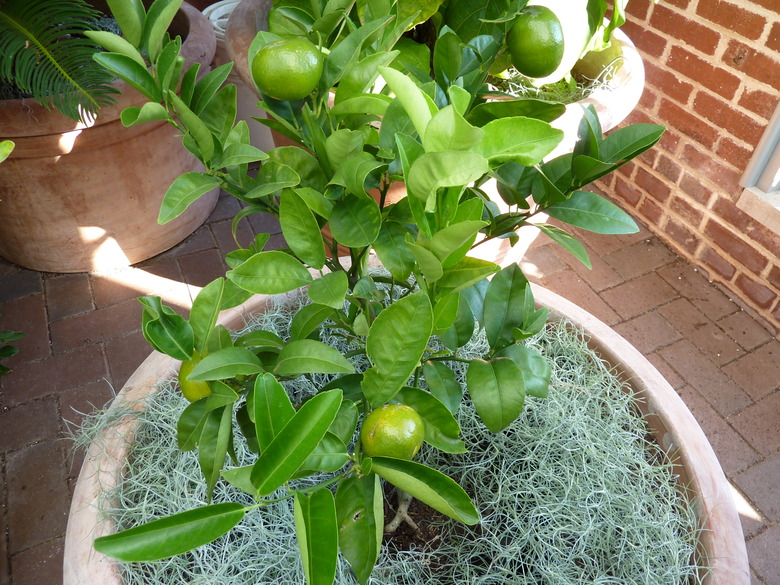Mandarins Or Oranges: What Are Cuties®?
Are Cuties® Oranges?
Cuties® are all California-grown mandarins (Citrus reticulata), growing only in the warmer areas of the state in USDA zones 9 to 11. Trademarked by the manufacturer Sun Pacific, Cuties® are not just one type of mandarin; they may be either Murcott mandarins or clementines, depending on the time of year.
You might hear the term "Cutie oranges," but Cuties® are not oranges (Citrus × sinensis) because mandarins are not oranges (strictly speaking).
Clementine mandarins (Citrus reticulata 'Clementine') are available during the winter months, and Murcott mandarins (Citrus reticulata 'Blanco') are produced from February until April, so the months in which Cuties® are available are November through April.
Tip
If you are familiar with Cuties®, you have probably also seen or purchased Halos® produced by Paramount Citrus. Sun Pacific and Paramount Citrus were formerly in partnership but split into two ventures in 2013; now, both produce clementines and Murcott mandarins in California.
What Is a Mandarin?
A mandarin is not a type of orange, nor is it necessarily a tangerine—although tangerines are indeed mandarins. There are generally four broad categories of mandarins:
- **Mediterranean Mandarins:** Called the willowleaf mandarin because its leaves are small and narrow, similar to willow leaves, this variety is not widely grown commercially in the U.S.—but is generally available in the citrus-producing countries of the Mediterranean.
- **King Mandarins:** These are usually available commercially as varieties Kinnow and Encore. These are the largest of the mandarins, and they require a high degree of heat, so they are seldom grown commercially.
- **Satsuma Mandarins:** Originally from Japan, Satsuma mandarins are commonly found canned or used in commercially available fruit cups. They are a cold-hardy variety.
- **Tangerine Mandarins:** Also called "common tangerine mandarins," this group is the most important commercially and comprises a wide range of hybrids and fruits known as only "tangerines." This is the group of which both clementines and Murcotts are members.
The medium-size mandarin tree flourishes in tropical and subtropical areas, although it is the most cold-hardy of the many citrus varieties. Mandarins are distinct from oranges because of their thin, loose rind and size. They are usually easily peeled and produce seedless fruit when hybridized to do so.
Clementine Mandarins
A clementine is one of the smallest of the mandarin oranges. At just 2 inches in diameter, it has a somewhat oval shape. Clementines, also known as "Algerian tangerines," originated in the Mediterranean and were cultivated in Florida before they were planted in California.
Clementines are a reddish-orange color and are highly aromatic with a spicy scent.
Murcott Mandarins
Murcott mandarins are medium-sized, from 2 1/2 to 3 inches in diameter, with the thin rind characteristic of all mandarins. The University of Riverside reports that they are less easily peeled than clementines, but the manufacturer doesn't report that. They are also grown in Florida, where they are marketed as "honey" tangerines.
Like the clementine, they are reddish-orange but can have a more yellow-orange color in warmer winters.
What Are Cuties®?
Cuties® launched as a brand in 2001, a joint venture of two big citrus producers, Paramount Citrus (with the parent company Wonderful Company) and Sun Pacific. They successfully marketed Cuties® as a kid-friendly citrus alternative to an orange that can easily be popped into a lunchbox, is deliciously sweet, peels easily and separates into small, delectable sections that melt in your mouth.
Their venture was so successful that U.S. consumers quickly elevated mandarins over oranges at the grocery store, increasing demand to such a degree that California's acreage in hybrids of easy-to-peel mandarins increased from fewer than 3,000 acres in 2001 to more than 70,000 acres by 2021.
With this success came more opportunities to grab market share, and by 2013, the two companies split. Sun Pacific secured full control and ownership of the Cuties® brand, but Wonderful Company immediately created its own brand, Wonderful Halos®. They had more trees than Sun Pacific and huge marketing and financial resources. Soon, their Halos® surpassed Cuties® in market share.
However, Cuties® continue to be broadly popular with consumers. The Cuties® brand is so widely recognized that some consumers see Halos® in the supermarket aisle and still refer to them as Cuties®.
References
- Purdue University: Mandarin Orange
- Texas A&M Extension: Home Fruit Production -Mandarins
- California Cuties: What's a Cutie?
- University of Illinois Extension: Burning Question: Are Clementines and Mandarin Oranges the Same?
- Missouri Botanical Garden: Citrus reticulata 'Clementine'
- UC Riverside: Murcott Mandarin
- UC Riverside: King Tangor
- UC Riverside: Willowleaf mandarin
- California Polytechnic State University, San Luis Obispo: Future Fruits Mandred Acreage Projection
- FreshFruitPortal: The Joint Venture That Collapsed
- Halos: FAQ
- University of California Cooperative Extension: A Mandarin by Any Other Name


